Features
Types of Guttering Guards
A detailed review of popular types of gutter guards.
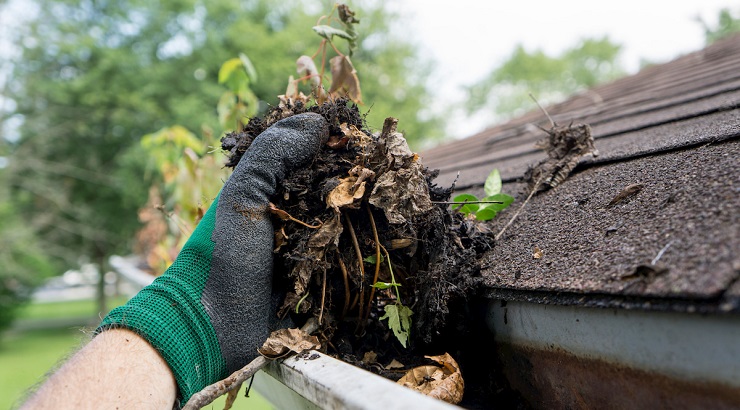
Also known as leaf guards or gutter guards, guttering guards are devices attached to a gutter to prevent leaves and debris from entering and clogging the system while allowing water to pass through.
Gutter guards work by covering the opening of a gutter system with a mesh screen or a uniquely designed cover that allows water to flow through while blocking leaves, debris, etc.
There are various types of guttering guards available on the market, depending on the homeowner’s budget, types of debris, and the weather patterns in the region.
Guard for gutters
From micro-mesh, screens, and brushes, to reverse curves and foam, below are some of the most common guttering guards.
1. Micro-mesh
These gutter guards are made of closely woven screens that have a mesh attached to a supporting frame that attaches to the gutter.
Often made of stainless steel, aluminum, or nylon, the mesh gutter screen allows the water to flow through while blocking leaves, debris and other unwanted elements.
Micro-mesh gutters are highly effective, as they block even the smallest debris.
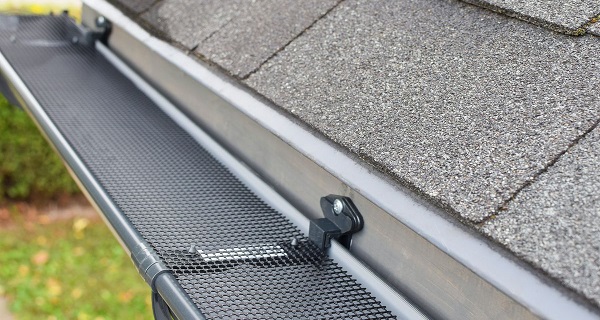
The disadvantage of this product is that it can hold some water droplets that can grow algae or mold when used in extremely wet environments, which can obstruct water flow or damage the mesh. However, this can be avoided through regular cleaning of the gutter guards.
Micro-mesh gutter guards cost between $1.50 and $10 per foot.
2. Screens
These types of gutter guards are made from a sheet of plastic, aluminum, stainless steel, or vinyl with small holes in them to allow water to flow through.
The functions of screens are the same as those of micro-mesh, only that their holes are bigger.
The size and shape of the holes vary depending on the manufacturer, and homeowners are advised to study the types of leaves in their compound before making the purchase.
One of the drawbacks of screens is that the larger holes allow fine debris to pass through the system, and they should only be used on sites where large debris is the problem.
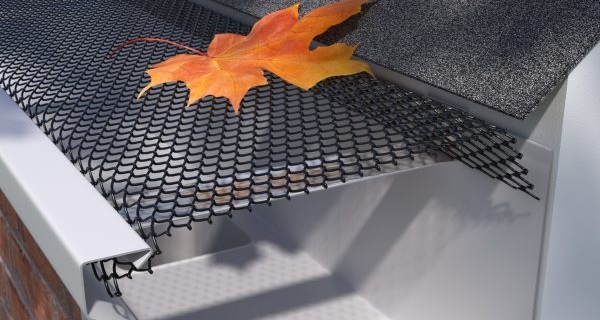
Screens leaf gutter guards cost between $0.50 and $5 per foot, making them the cheapest of all types of gutter guards.
Plastic screens tend to be the cheapest, while aluminum ones are the most expensive.
3. Brush
Resembling a pipe cleaner, this type of gutter guard is designed to sit inside the gutter to block debris while allowing water to pass through its bristles.
Brush-style gutter guards are usually made of a thick metal wire core – one to three feet long – with polypropylene bristles spreading from the middle.
One of the major advantages of these guards is their ease of installation.
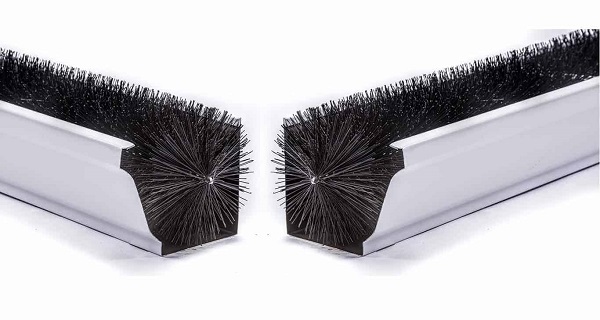
Since they are inserted into the gutters without any need for screws or connections to the rain gutters, brush-style guards can be installed by anybody who can climb up a ladder.
Brush leaf guard gutters cost anything between $2 and $4 per foot.
4. Reverse curve
Also known as surface tension gutter guards, reverse curve gutter guards rely on the unique properties of liquid to direct the water into the rain gutters while blocking debris.
The top surface is usually ribbed or textured to increase the surface tension, which causes the water to stick to the surface and flow into the gutter system.
RELATED: How to Choose Roofing Material
In most cases, the top surface spreads beyond the edge of the gutter – making it unlikely that leaves and debris can fall into the small openings of the gutter.
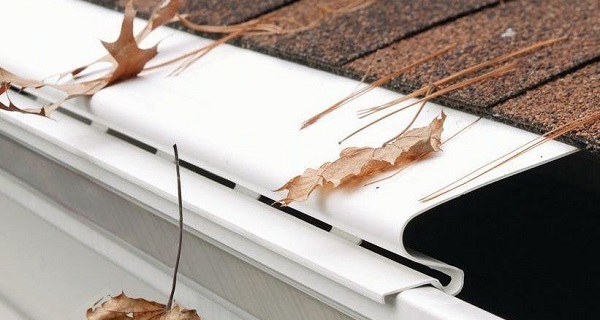
One of the drawbacks of reverse curve guards is that they are installed under the first or second row of roof shingles, which requires the shingles to be lifted during installation – potentially weakening the roof.
These guards are designed to last with minimal maintenance, though occasional cleaning is advisable to prevent particle buildup and water flow obstruction.
Reverse-curve gutter guards cost between $5 and $10 per foot.
5. Foam
These are triangular blocks of foam meant to rest inside the rain gutters to stop debris from passing through while allowing water to flow through their spongy structure.
Like brush-style gutter guards, foam guards are quite easy to install as a DIY project. Indeed, anybody capable of climbing up a ladder can insert these guards into the gutter system.
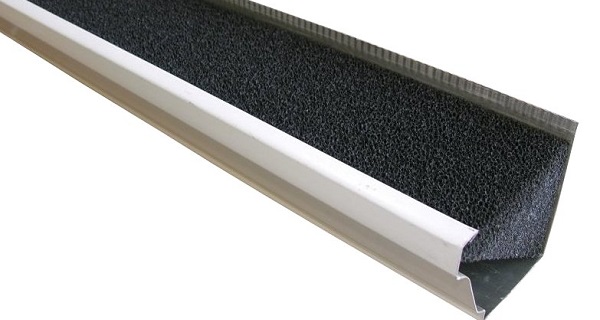
However, brush-style guards can become saturated with water – creating a good atmosphere for the growth of mold, rot, or mildew. When this occurs, the foam blocks must be replaced.
Besides, foam guards are not ideal for blocking insects, rats, and other small creatures that can dig holes into the foam to make nests.
Foam gutter guards cost anywhere between $2 and $3 per foot.
Gutter guards cost
Although we earlier quoted the average cost of leaf guard gutters cost, we should keep in mind that the actual cost of gutter guards includes installation costs.
For an average house with 250 feet of gutters, the average cost of gutter guards is $125 for the cheapest option, and up to $2,500 for the high-end options.
Fitting costs for this home can range from $300 to upwards of $2,500 depending on the type of gutter guard and the difficulty of installation.
Other factors that determine the cost of installation include gutter accessibility, length of roof, installation methods, the vendor, and the location of the house.














